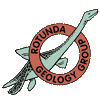This talk contrasted two early 19th Century collectors and preparators of vertebrate fossils, notably of marine reptiles. Mary Anning came from a poor, ill-educated background. A lot of nonsense has been written about her but she has no adequate biography. She lived all her life in and around Lyme Regis in Dorset, was a dissenter, published nothing, but was a hunter of fossils, the sale of which from the family shop she relied upon to provide an income.
After the end of the Napoleonic Wars seaside resorts began to attract visitors and Mary’s business acumen made the most of the beginnings of a tourist trade in souvenirs.
In 1812 she found her first Ichthyosaur skull when she was 11 yrs old, and in 1823 a complete Plesiosaur. Prominent geologists became interested in the finds. In 1824 Lyell visited Lyme Regis. At that time these fossil bones were not understood. The most eminent anatomist was Cuvier in France so her best material was sent to Paris.
There was a great interest in all fossils not just those of large reptiles. Coprolites were accepted as proof of fossil bones being once live animals, The ink from belemnite ink sacs was used to write postcards and the earliest Pterodactyl was discovered. The Anning family business was recognised and supported, one of Henry de la Beche’s drawings being sold for their benefit.
Thomas Hawkins was somewhat younger than Mary Anning and very wealthy. He was full of religious fervour and a manic collector of everything, publishing elephant folio volumes of his collections. He trained as a surgeon and started collecting fossils in 1830 influenced by William Buckland and his museum at Oxford. Hawkins amassed a large fossil collection buying in material from quarrymen and other collectors. When he got into financial difficulties and wanted to sell his fossils to the British Museum, Buckland and Mantell valued his collection at £1,250. A second collection included partial skeletons of marine reptiles which he got fully restored by Italian plasterers and these forgeries were sold to the British Museum where they still are to be seen.
